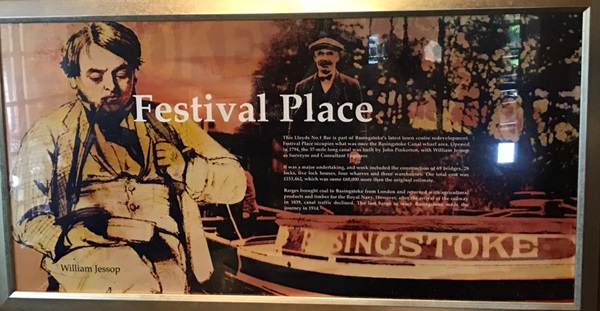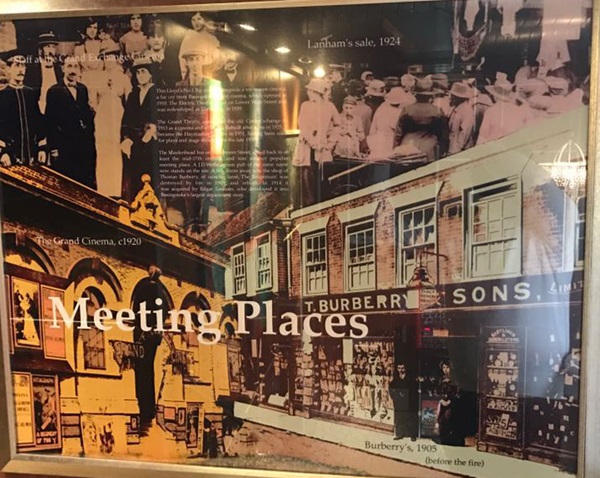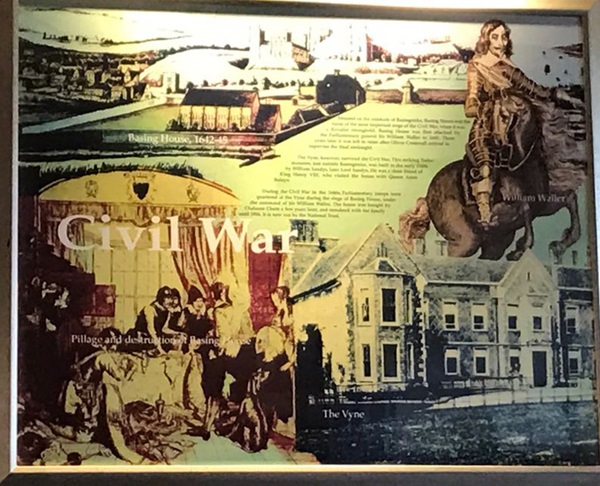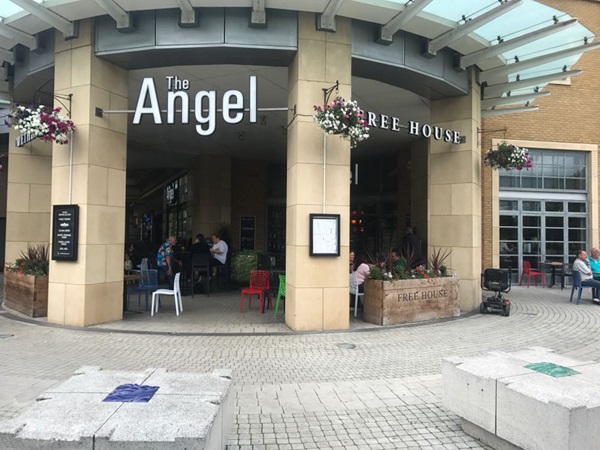This former Lloyds No.1 bar opened in 2002. In 2015, it was renamed The Angel after The Angel Inn which stood behind Barclays Bank, in Market Place. The historic inn was the venue for dances which were attended by the novelist Jane Austen. The Angel closed in the 1860s. A new Angel was built soon after, on the corner of Wote Street and Potters Lane, but was demolished in the 1960s, during the rebuilding of the town centre.
Prints and text about the history of the area.

This text reads: This Lloyds No.1 Bar is part Basingstoke’s latest town centre redevelopment. Festival Place occupies what was once the Basingstoke Canal wharf area. Opened in 1794, the 37 mile long canal was built by John Pinkerton, with William Jessop as surveyor and consultant engineer.
It was a major undertaking, and work included the construction of 69 bridges, 29 locks, 5 lock houses, four wharves and three warehouses. The total cost was £153,462, which was some £60,000 more than the original estimate.
Barges brought coal to Basingstoke from London and returned with agricultural products and timber for the Royal Navy. However, after the arrival of the railway in 1839, canal traffic declined. The last barge to reach Basingstoke made the journey in 1914.
Prints and text about famous local buildings.

The text reads: This Lloyds No.1 Bar stands alongside a ten screen cinema, a far cry from Basingstoke’s first cinema, which opened in 1919. The Electric Theatre stood on Lower Wote Street and was redeveloped as The Savoy, in 1939.
The Grand Theatre opened in the old Corn Exchange in 1913 as a cinema and a theatre. Rebuilt after a fire in 1925, it became the Haymarket Theatre in 1951, having been used for plays and stage shows since the late 1930s.
The Maidenhead Inn on Winchester Street, dated back to at least the mid 17th century, and was another popular meeting place. A J D Wetherspoon pub of the same name now stands on the site. A few doors away was the shop of Thomas Burberry, of Raincoat fame. The Emporium was destroyed by fire in 1905, and rebuilt. In 1914 it was acquired by Edger Lanham, who developed it into Basingstoke’s largest department store.
Prints depicting the Civil War in Basingstoke.

External photograph of the building – main entrance.

If you have information on the history of this pub, then we’d like you to share it with us. Please e-mail all information to: pubhistories@jdwetherspoon.co.uk